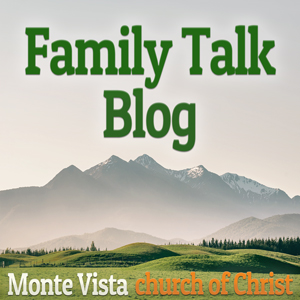What We Believe — Scripture
The gnostic texts that the general population knows most about are from the Nag Hammadi excavation in 1945. Of the 52 codexes, 40 were Gnostic writings scholars had never seen before. The collection also includes gospels, acts, and letters. They combine pagan, Jewish, and Christian ideas and reflect the two primary Gnostic schools of thought, Sethian and Valentinian. Many of the texts emphasize the Apostle Thomas. However, the main subject presented by modern Gnostics is the theoretical role of Mary Magdalene in the life of Christ and the spread of the gospel.
Some Nag Hammadi writings give insights into second-century Gnostic Christianity, including its beliefs and traditions, and its struggle with the orthodox church. The Gospel of Truth describes a Gnostic account of creation and the origin of evil because of the fall of Sophia (wisdom). It portrays Jesus as sent by God to remove human ignorance. The Gospel of Philip presents Mary Magdalene as the most informed disciple, beloved by Jesus, and fueling suspicion that she was his wife. The Apocryphon of John and other texts describe Jesus reappearing and giving secret knowledge to the apostles after “spiritually” ascending to heaven. Other texts emphasize spirit vs. matter, the idea of the Divine Feminine, the ultimate unity of self-knowledge and knowledge of the divine, the attainability of Christhood to all who attain gnosis, the misleading nature of the material world, various details of creation, and theological doctrine of angels.
The very symbolic nature of gnostic writings makes it difficult to form a commentary on them—the primary concept of substance Vs. Spirit, literal or figurative, set against changing word meanings with time, makes for a challenging study. An example of the difficulties is in the Gospel of Philip. Among various passages on marriage as a sacred mystery, two passages directly refer to Mary Magdalene and her close relationship with Jesus. The first passage: “There were three who always walked with the Lord: Mary, his mother, and her sister, and Magdalene, the one who was called his companion. His sister and his mother and his companion were each a Mary.” Then later, the second passage, purportedly referring to Jesus kissing Mary Magdalene, is incomplete because of damage to the original manuscript. Several words are missing. Guesses as to what they were are shown below in brackets. Most notably, there is a hole in the manuscript after the phrase “and used to kiss her [often] on her….” The passage as it appears is: “As for Wisdom who is called “the barren,” she is the mother [of the] angels. And the companion of the […] Mary Magdalene. The rest of [the disciples…] They said to him, “Why do you love her more than all of us?” The Savior answered and said to them, “Why do I not love you like her? When a blind man and one who sees are both together in the darkness, they are no different from one another. When the light comes, then he who sees will see the light, and he who is blind will remain in darkness.” Some scholars speculate that “hand” is the word after “kiss her… on her”. But it may have been cheek, forehead, or feet to simply show respect.
The exact meaning of many statements cannot be determined, and the context is often lost due to missing pages. But authors Claire Nahmad and Margaret Bailey used “inner listening” and claim to have uncovered lost material. Clare Nahmad wrote the book “Secret Teachings Of Mary Magdalene” and advertised it as “The lost verses of The Gospel Of Mary, revealed and published for the first time.” Nahmad and Bailey are neopagans involved in Wicca. Wicca is a form of modern paganism, especially a tradition founded in England in the mid-20th century and claiming its origins in pre-Christian religions. Through “mystic methods,” they visualized the characters that once filled the holes in the page. They filled in the blanks with their thoughts and presented the world with a text supporting the heretic beliefs that New Testament writers had refuted. These two authors claim the passage reads, “And the companion of the [Lord was] Mary Magdalene. [Jesus loved] her more than [all] the disciples [and used to] kiss her [often] on her [mouth].” Add in the many today that consider companion means wife, and you can understand why some today believe Jesus was married. The New Testament names Jesus’ three primary companions: “He allowed no one to accompany Him, except Peter and James and John the brother of James” (Mark 5:37).
We would all do well to observe advice from Peter and Paul.
“You therefore, beloved, knowing this beforehand, be on your guard so that you are not carried away by the error of unprincipled men and fall from your own steadfastness” (2 Peter 3:17).
“Therefore as you have received Christ Jesus the Lord, so walk in Him, having been firmly rooted and now being built up in Him and established in your faith, just as you were instructed, and overflowing with gratitude. See to it that no one takes you captive through philosophy and empty deception, according to the tradition of men, according to the elementary principles of the world, rather than according to Christ. For in Him all the fullness of Deity dwells in bodily form” (Colossians 2:6-9).
